#1934 Maria
Explore tagged Tumblr posts
Text

Very interesting and beautiful undated photo of Maria. My guessing is that it was taken circa 1934, but I cannot be sure. It seems it comes from a book, but this photo is not printed in "María Montez: su Vida" by Margarita Vicens nor in "María Montez La Reina del Tecnicolor" by Antonio Pérez Arnay. This photo was posted at Listal two years ago.
Any information given on it (story, photographer, publication, year...) will be much welcomed and credited!!
Thank you very much!!
#María Montez#Maria Montez#1934 Maria#actress#model#La Reina del Technicolor#The Queen of Technicolor#Old Hollywood#Gold Hollywood#information#sources#thank you
8 notes
·
View notes
Text

Bela Lugosi and Maria Alba in The Return of Chandu (1934)
47 notes
·
View notes
Text

Bela Lugosi, Maria Alba and Clara Kimball Young in The Return Of Chandu 1934 (serial)
19 notes
·
View notes
Text

12th-century Basilica of Santa Maria in Trastevere in Rome, Italy
Italian vintage postcard, mailed in 1934 to France
#sepia#century#santa#photography#vintage#france#mailed#postkaart#basilica#12th-century#1934#ansichtskarte#ephemera#carte postale#postcard#italian#rome#postal#12th#trastevere#briefkaart#photo#italy#tarjeta#maria#historic#postkarte
6 notes
·
View notes
Photo
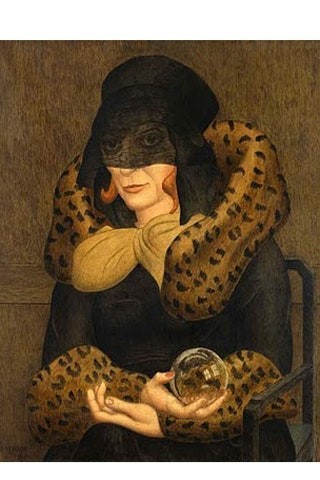
1934 Francis Hastings, 16th Earl of Huntingdon, Portrait of Marchesa Luisa Casati.
Lord Huntingdon's (Francis Hastings, 16th Earl of Huntingdon) first marriage was to Cristina Casati, daughter of Camillo, Marquis Casati Stampa di Soncino by his wife, the artistic muse Marchesa Luisa Casati, in 1925; they had one daughter Lady Moorea Hastings.
There is a portrait of Luisa painted by Hastings in 1934. Definitely Cristina's idea to break the ice between mother and son-in-law. I wonder what kind of relationship Luisa had with her daughter. Aside from their tempered characters and lack of love, they had nothing in common. Family patterns are made to be reproduced. Luisa revived Cristina, and Cristina Moorea, the childhood of loneliness and abandonment from which they had suffered so much. I don't like Hastings' painting. She holds a crystal ball and, behind her veil, her gaze is that of a slightly stultified witch. As long as the painter has talent, a painting does not lie. If Luisa didn't love her son-in-law, he would return it to her. » lx)
#1934#portrait#earl of huntingdon#francis hastings#marchesa luisa casati#luisa casati#la casati#la marchesa#la marquise#casati#amman#marquise casati#marchesa casati#Marchesa Casati Stampa#Luisa Adele Rosa Maria von Amman#Luisa Adele Rosa Maria Amman#Luisa Amman#Marquise Casati Stampa di Soncino#Marchesa Casati Stampa di Soncino#Luisa Marchesa Casati Stampa Di Soncino#Luisa Casati Stampa di Soncino#Marquise luisa casati#Marquise de Chabannes#marquise#marquesa casati#Viscount Hastings#Lord Huntingdon#Cristina Casati#Cristina Casati Stampa di Soncino
13 notes
·
View notes
Photo


The Return of Chandu - Film fantastique américain en 12 épisodes réalisé par Ray Taylor - 1934
Personnages principaux :
Béla Lugosi as Frank Chandler, aka Chandu the Magician
Maria Alba as Princess Nadji
Clara Kimball Young as Dorothy Regent
#Et pendant ce temps-là#Cinéma#Cinema#Film#Movie#Film fantastique#Fantasy movie#The Return of Chandu#Bela Lugosi#Maria Alba#Clara Kimball Young#Ray Taylor#Etats-Unis#USA#1934
9 notes
·
View notes
Text
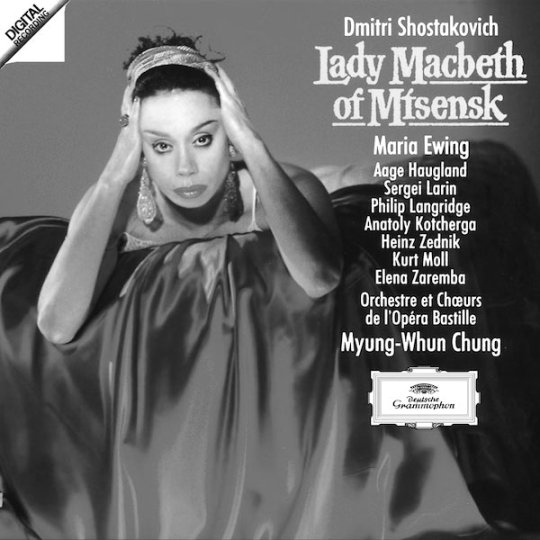
Current;y Playing
Dmitri Shostakovich LADY MACBETH OF MTSENSK, Op. 29
Maria Ewing
Aage Haugland, Sergej Larin, Philip Langridge, Anatoly Kotcherga, Heinz Zednik, Kurt Moll, Elena Zaremba
Myung-Whun Chung Orchestre et Chœurs De L'Opéra Bastille
4 notes
·
View notes
Text

"'Mignon' amongst the peonies to which I always compared her (snapshot taken by myself)"
Photograph of Princess Maria of Romania (later Queen Maria of Yugoslavia) by her mother, Queen Marie of Romania, early 1900s.
Marie, Queen of Romania, The Story of My Life (New York: Charles Scribner's Sons, 1934)
91 notes
·
View notes
Text

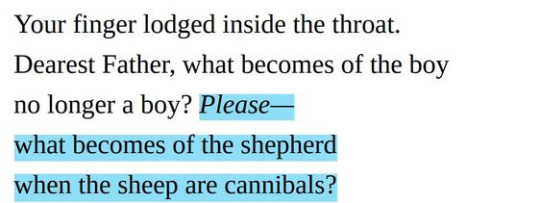

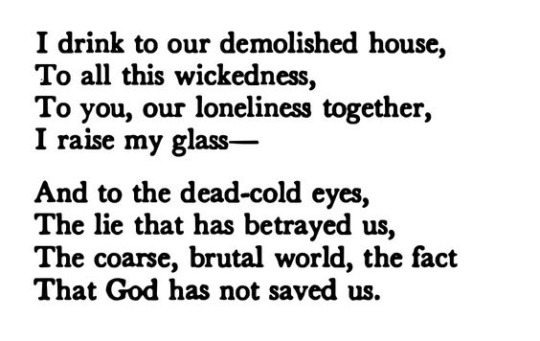






sometimes i forget how much i didn't want to survive
Fariha Róisín How to Cute a Ghost / Ocean Vuong Prayer for the Newly Damned / @/litarnes (on instagram) / Anna Akhmatova The Last Toast / Mary Szybist Incarnadine: Poems / unknown / Anaïs Nin Fire: From "A Journal of Love": The Unexpurgated Diary of Anaïs Nin, 1934-1937 / unknown / Carmen Maria Machado In the Dream House / Langston Hughes Good Morning, Revolution: Uncollected Social
#been struggling lately so here we are#on loneliness#on loss#on emotion#on sadness#on not wanting to live#on giving up#on letting go#web weave#web weaving#poetry compilation#poetry#poem#words#writing#text#quote#fariha roisin#how to cure a ghost#ocean vuong#prayer for the newly damned#anna akhmatova#the last toast#mary szybist#incarnadine#anais nin#a journal of love#carmen maria machado#in the dream house#langston hughes
1K notes
·
View notes
Text

A Nazi rally held in Madison Square Garden, February 20th 1939
* * * *
LETTERS FROM AN AMERICAN
October 21, 2024
Heather Cox Richardson
Oct 22, 2024
On Saturday, September 7, Republican presidential candidate Donald Trump predicted that his plan to deport 15 to 20 million people currently living in the United States would be “bloody.” He also promised to prosecute his political opponents, including, he wrote, lawyers, political operatives, donors, illegal voters, and election officials. Retired chair of the Joint Chiefs of Staff Mark Milley told journalist Bob Woodward that Trump is “a fascist to the core…the most dangerous person to this country.”
On October 14, Trump told Fox News Channel host Maria Bartiromo that he thought enemies within the United States were more dangerous than foreign adversaries and that he thought the military should stop those “radical left lunatics” on Election Day. Since then, he has been talking a lot about “the enemy from within,” specifically naming Representative Adam Schiff and former House speaker Nancy Pelosi, both Democrats from California, as “bad people.” Schiff was the chair of the House Intelligence Committee that broke the 2019 story of Trump’s attempt to extort Volodymyr Zelensky that led to Trump’s first impeachment.
Trump’s references to the “enemy from within” have become so frequent that former White House press secretary turned political analyst Jen Psaki has called them his closing argument for the 2024 election, and she warned that his construction of those who oppose him as “enemies” might sweep in virtually anyone he feels is a threat.
In a searing article today, political scientist Rachel Bitecofer of The Cycle explored exactly what that means in a piece titled “What (Really) Happens If Trump Wins?” Bitecofer outlined Adolf Hitler’s January 30, 1933, oath of office, in which he promised Germans he would uphold the constitution, and the three months he took to dismantle that constitution.
By March, she notes, the concentration camp Dachau was open. Its first prisoners were not Jews, but rather Hitler’s prominent political opponents. By April, Jews had been purged from the civil service, and opposition political parties were illegal. By May, labor unions were banned and students were burning banned books. Within the year, public criticism of Hitler and the Nazis was illegal, and denouncing violators paid well for those who did it.
Bitecofer writes that Trump has promised mass deportations “that he cannot deliver unless he violates both the Constitution and federal law.” To enable that policy, Trump will need to dismantle the merit-based civil service and put into office those loyal to him rather than the Constitution. And then he will purge his political opponents, for once those who would stand against him are purged, Trump can act as he wishes against immigrants, for example, and others.
Ninety years ago, as American reporter Dorothy Thompson ate breakfast at her hotel in Berlin on August 25, 1934, a young man from Hitler’s secret police, the Gestapo, “politely handed me a letter and requested a signed receipt.” She thought nothing of it, she said, “But what a surprise was in store for me!” The letter informed her that, “in light of your numerous anti-German publications,” she was being expelled from Germany.
She was the first American journalist expelled from Nazi Germany, and that expulsion was no small thing. Thompson had moved to London in 1920 to become a foreign correspondent and began to spend time in Berlin. In 1924 she moved to the city to head the Central European Bureau for the New York Evening Post and the Philadelphia Public Ledger. From there, she reported on the rise of Adolf Hitler. She left her Berlin post in 1928 to marry novelist Sinclair Lewis, and the two settled in Vermont.
When the couple traveled to Sweden in 1930 for Lewis to accept the Nobel Prize in Literature, Thompson visited Germany, where she saw the growing strength of the fascists and the apparent inability of the Nazi’s opponents to come together to stand against them. She continued to visit the country in the following years, reporting on the rise of fascism there, and elsewhere.
In 1931, Thompson interviewed Hitler and declared that, rather than “the future dictator of Germany” she had expected to meet, he was a man of “startling insignificance.” She asked him if he would “abolish the constitution of the German Republic.” He answered: “I will get into power legally” and, once in power, abolish the parliament and the constitution and “found an authority-state, from the lowest cell to the highest instance; everywhere there will be responsibility and authority above, discipline and obedience below.” She did not believe he could succeed: “Imagine a would-be dictator setting out to persuade a sovereign people to vote away their rights,” she wrote in apparent astonishment.
Thompson was back in Berlin in summer 1934 as a representative of the Saturday Evening Post when she received the news that she had 24 hours to leave the country. The other foreign correspondents in Berlin saw her off at the railway station with “great sheaves of American Beauty roses.”
Safely in Paris, Thompson mused that in her first years in Germany she had gotten to know many of the officials of the German republic, and that when she had left to marry Lewis, they offered “many expressions of friendship and gratitude.” But times had changed. “I thought of them sadly as my train pulled out,” she said, “carrying me away from Berlin. Some of those officials still are in the service of the German Government, some of them are émigrés and some of them are dead.”
Thompson came home to a nation where many of the same dark impulses were simmering, her fame after her expulsion from Germany following her. She lectured against fascism across the country in 1935, then began a radio program that reached tens of millions of listeners. Hired in 1936 to write a regular column three days a week for the New York Herald Tribune, she became a leading voice in print, too, warning that what was happening in Germany could also happen in America.
In an echo of Lewis’s bestselling 1935 novel It Can’t Happen Here, she wrote in a 1937 column: “No people ever recognize their dictator in advance…. He always represents himself as the instrument for expressing the Incorporated National Will. When Americans think of dictators they always think of some foreign model. If anyone turned up here in a fur hat, boots and a grim look he would be recognized and shunned…. But when our dictator turns up, you can depend on it that he will be one of the boys, and he will stand for everything traditionally American.”
In less than two years, the circulation of her column had grown to reach between seven and eight million people. In 1939 a reporter wrote: “She is read, believed and quoted by millions of women who used to get their political opinions from their husbands, who got them from [political commentator] Walter Lippmann.” The reporter likened Thompson to First Lady Eleanor Roosevelt, saying they were the two “most influential women in the U.S.”
When 22,000 American Nazis held a rally at New York City’s Madison Square Garden in honor of President George Washington’s birthday on February 20, 1939, Thompson sat in the front row of the press box, where she laughed loudly during the speeches and yelled “Bunk!” at the stage, illustrating that she would not be muzzled by Nazis. After being escorted out, she returned to her seat, where stormtroopers surrounded her. She later told a reporter: “I was amazed to see a duplicate of what I saw seven years ago in Germany. Tonight I listened to words taken out of the mouth of Adolf Hitler.”
Two years later, In 1941, Thompson returned to the issue she had raised when she mused about those government officials who had gone from thanking her to expelling her. In a piece for Harper’s Magazine titled “Who Goes Nazi?” she wrote: “It is an interesting and somewhat macabre parlor game to play at a large gathering of one’s acquaintances: to speculate who in a showdown would go Nazi,” she wrote. “By now, I think I know. I have gone through the experience many times—in Germany, in Austria, and in France. I have come to know the types: the born Nazis, the Nazis whom democracy itself has created, the certain-to-be fellow-travelers. And I also know those who never, under any conceivable circumstances, would become Nazis.”
Examining a number of types of Americans, she wrote that the line between democracy and fascism was not wealth, or education, or race, or age, or nationality. “Kind, good, happy, gentlemanly, secure people never go Nazi,” she wrote. They were secure enough to be good natured and open to new ideas, and they believed so completely in the promise of American democracy that they would defend it with their lives, even if they seemed too easygoing to join a struggle. “But the frustrated and humiliated intellectual, the rich and scared speculator, the spoiled son, the labor tyrant, the fellow who has achieved success by smelling out the wind of success—they would all go Nazi in a crisis,” she wrote. “Those who haven’t anything in them to tell them what they like and what they don’t—whether it is breeding, or happiness, or wisdom, or a code, however old-fashioned or however modern, go Nazi.”
In Paris following her expulsion from Berlin, Thompson told a reporter for the Associated Press that the reason she had been attacked was the same reason that Hitler’s power was growing. “Chancellor Hitler is no longer a man, he is a religion,” she said.
Suggesting her expulsion was because of her old article disparaging Hitler, in her own article about her expulsion she noted: “My offense was to think that Hitler is just an ordinary man, after all. That is a crime against the reigning cult in Germany, which says Mr. Hitler is a Messiah sent by God to save the German people…. To question this mystic mission is so heinous that, if you are a German, you can be sent to jail. I, fortunately, am an American, so I merely was sent to Paris. Worse things can happen….”
LETTERS FROM AN AMERICAN
HEATHER COX RICHARDSON
#Heather Cox Richardson#Letters From An American#nazis#Madison Square Garden#1930s#WWII#American History#fascism#world history#Dorothy Thompson#It Can't Happen Here#journalism#history#election 2024
62 notes
·
View notes
Text

Janet Newbold as Maria Josepha of Saxony, Dauphine of France, for a Louis XV era pageant at the second Metropolitan Opera Ball. Photo by Cecil Beaton for Vogue, June 1934.
74 notes
·
View notes
Text
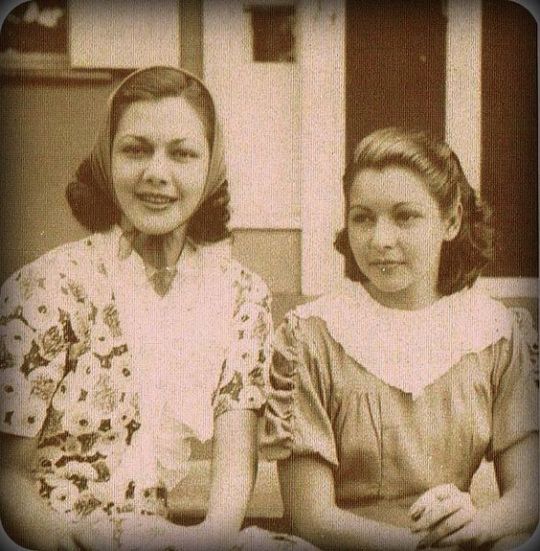
María África Gracia Vidal (on screen she will became Maria Montez) pictured with her younger sister Consuelo in Barahona, Dominican Republic in 1934.
This photo comes from Pinterest but it has been printed in Margarita Vicens book "María Montez, Su vida - edición especial del Centenario" (Dirección General de Cine de la República Dominicana, 2012.
#María Montez#Maria Montez#1934 Maria#Consuelo Gracia Vidal#1934 Consuelo#Julia Andre#actress#Queen of Technicolor#La Reina del Tecnicolor#María Montez su vida#Margarita Vicens#Gracia Family#Montez Family
19 notes
·
View notes
Text



The Return of Chandu (1934)
#the return of chandu#bela lugosi#maria alba#clara kimball young#lucien prival#1934#1930s movies#ray taylor#adventure#fantasy#serials#vintage movie ads
38 notes
·
View notes
Text

Bela Lugosi and Maria Alba (Spanish actress) in The Return Of Chandu 1934 (Serial)
36 notes
·
View notes
Text




Happy New Year! - Celebrating Panchito Pistoles, Aracuan Bird and The Three Caballeros' 80th Birthday, Fethry Duck's 60th Birthday and Donald Duck's 90th Birthday - Celebrating New Years with Donald Duck, his friends and family - Donald’s Family and Friends - Modern Three Caballeros - Quack Pack AU - Duckverse - My Gift for Friends - My Style - Happy New Year, Happy Birthdays and Happy Holidays!
I wish everyone a Happy New Year, a New Year 2025 with lots of wishes and health, and happy holidays!
Happy New 2025!
I apologize for the delay, because I worked on this drawing for two days, considering that I had other things to do, but I certainly did this now. Unfortunately, I was not able to do last year's celebration of my favorite duck on the occasion of his 90th birthday where he celebrates with his family and friends except for a few drawings, as well as the birthday of Fethry Duck and Panchito Pistoles, so I wanted to bring everything together in my new first New Year's drawing, as they celebrate an important anniversary, and you can see it on the cake where they write in the form of candles.
9/6/1934 The Classic Short “The Wise Little Hen” was shown and Donald Duck appeared there for the first time. Donald Duck will become one of the main stars of not only Disney, but also cartoon films, comics and video games at all. Certainly there is no need to tell his history. Yes, on December 21, 1944, the movie “The Three Caballeros” aired and Panchito Pistoles and the goofy Aracuan Bird appeared in that movie. And that’s how the Three Caballeros team was born, in my opinion the best Disney trio, after Huey, Dewey and Louie. Fethry first appeared in the comic book “The Health Nut” which was published in 1964, and on August 2, in the comic book Topolino number 453, in the American edition it will come out two years later. That comic was written by Dick Kinney and drawn by Al Hubbard. So I wish all of them a happy birthday and happy anniversary. In addition, I wish Daisy Duck a happy 85th birthday this year.
Otherwise, they celebrate in Brazil at Jose Ze Carioca’s (José Carioca-Zé Carioca), because it’s summer there. Last year I drew a couple of drawings of adults and children celebrating New Year's Eve in swimsuits and you can see them here: https://ducktoonsfanart.tumblr.com/post/738405983887474688/happy-new-year-celebrating-new-years-in-brazil
I drew it in my own way adding a lot of characters as I usually like and mostly I combined from Quack Pack, The Legend of The Three Caballeros, Donald Duck comics (Italian comics), Ze Carioca comics (Brazilian comics), Darkwing Duck, Ducktales both versions, Double Duck and Duck Avenger (Paperinik) comics. It’s mostly part of that Quack Pack AU of mine. I drew mostly in my own way. And this is also part of my version of Modern Three Caballeros. In addition to Donald Duck, Panchito Pistoles, Aracuan Bird and Fethry Duck, there are also their best friend José Zé Carioca, Rosinha Maria Vaz (José's girlfriend), Nestor, Daisy Duck, Gloria Pascoalina (Fethry's girlfriend), Della Duck, Gyro Gearloose, Dickie Duck, Gus Goose, Gladstone Gander, Abner Whitewater Duck, Uno Ducklair (One-Uno), Drake Mallard, Fenton Crackshell, O. K. Quack (a friendly duck from the universe from the Topolino comics), Queen Reginella, Kildare Coot (Sgrizzo), Moby Duck (Donald's distant older cousin next to Fethry Duck), Gandra Dee, Morgana Macawber, Launchpad McQuack, Lyla Lay and Kay K.
I hope you like this drawing and this idea and feel free to like and reblog this and please don't copy my versions of these characters and my ideas without mentioning me. Thanks! I wish everyone a happy 60th birthday to Fethry Duck, 80th birthday to Panchito Pistoles and Aracuan Bird, 85th birthday to Daisy Duck and 90th birthday to the best duck who inspired me, Donald Duck! And a happy New Year to everyone!
P.S. By the way, this is a gift for all of you, especially fans of Donald Duck and his comics, video games and cartoons. But I dedicate these drawings in particular as my gift to these people, for @elmer-dat-gander, @you-big-palooka, @isabellanajera, @fantasticenthusiasttale and to everyone else who loves these characters. I hope you like my gifts for this holiday season! Enjoy and Happy New Year 2025!
#my fanart#happy new 2025#2025#donald duck#happy birthday#the three caballeros#duckverse#quack pack#artists on tumblr#darkwing duck#ducktales#ze carioca comics#the legend of the three caballeros#disney birds#disney ducks#daisy duck#panchito pistoles#disney duckverse#duck comics#jose carioca#José Carioca#della duck#fethry duck#aracuan bird#drake mallard#happy new year#gyro gearloose#gus goose#rosinha maria vaz#reginella
24 notes
·
View notes
Text

Marlene Dietrich and daughter Maria Riva at the Polo Matches, Hollywood, August 1934.
250 notes
·
View notes